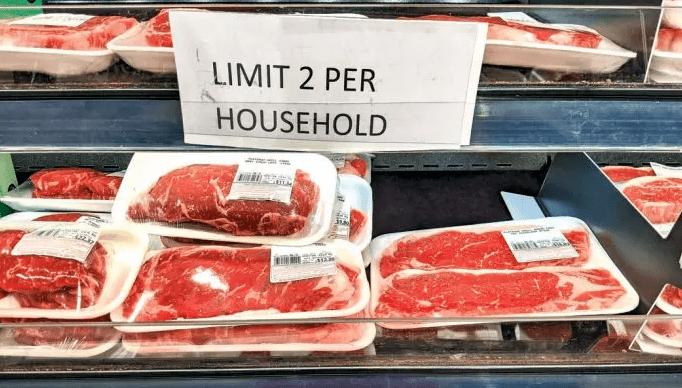
On June 5th, according to CTV News Ottawa, the continuous rise in beef prices in Canada is reshaping the country's food consumption market and having a profound impact on multiple business links including retail, production, distribution, marketing and consumer behavior. According to a report from the Agricultural and Food Analysis Laboratory at Dalhoux University, since the beginning of 2025, the price of beef has risen significantly, with some key parts increasing by more than 30%. This trend not only influences consumers' purchasing decisions, but also poses new challenges to supply chain stability, retailers' strategies and brand positioning.
First of all, the price mechanism has become the direct driving force for the change in the consumption structure of beef. The rapid increase in beef prices has gradually transformed it from a mass daily consumer good to a high-end luxury item. Consumers, with limited budgets, have begun to view chicken, pork or plant-based protein products as alternatives. This kind of consumption substitution has driven the growth of the meat substitute market, especially providing a positive stimulus to artificial meat and plant-based hamburger products. As consumers' awareness increases, market demand is gradually shifting from "price first" to "cost performance first", which prompts enterprises to make corresponding adjustments in pricing strategies, brand repositioning and product line layout.
The changes in the beef production end constitute the fundamental logic of the price increase. It is reported that the inventory of beef cattle in Canada has dropped to the lowest level since 1989. This long-term trend indicates that the livestock industry is being compressed by a combination of factors such as labor shortages, rising land costs, stricter environmental regulations and low industrial profit margins. This has prompted some producers to withdraw from the market, exacerbating the imbalance between supply and demand and making raw material prices an important variable driving up the prices of terminal products. For enterprises, this means that the stability of raw material acquisition has become the key to future development, and more resources need to be invested in cost control, risk hedging and the design of cooperation mechanisms.
The issue of concentration in the circulation and processing links has also gradually emerged. The report mentions that Canada's competition regulation in the meat processing sector is significantly weaker than that of the United States. In the United States, the federal government remains highly sensitive to vertical consolidation and price manipulation in industries and conducts anti-monopoly intervention from time to time. In Canada, the lack of effective supervision may fuel irrational price fluctuations and reduce market transparency. For small and medium-sized meat retail enterprises, this market environment has increased the uncertainty of costs and the asymmetry of bargaining power, forcing them to rely on more flexible purchasing strategies. For instance, Pete and Gus Butcher Shop in the Bahawan area of Ontario has stabilized prices while ensuring supply quality by bypassing large packers and directly collaborating with grass-fed farms in Alberta. This disintermediation strategy helps enhance consumer trust and loyalty, and also provides a referenceable business model for small retailers.
The pricing and promotion strategies of retail terminals are also changing. Traditional large chain supermarkets, due to their long logistics chains and centralized procurement systems, have longer price response cycles and find it difficult to respond flexibly to market fluctuations. Community-based independent butcher shops can maintain a certain price advantage in the current environment through refined operation, regionalized supply chains and the maintenance of consumer relationships. The strategy adopted by Pete and Gus Butcher Shop of actively absorbing some costs and reducing the prices of high-end parts is essentially reconstructing brand perception by applying the "value proposition". This strategy not only helps maintain market share amid intense price fluctuations, but also creates a sense of social responsibility and corporate sentiment among consumers, thereby enhancing customer stickiness.
The changes in beef prices have simultaneously affected the market layout of seasonal consumer categories such as barbecues. Take summer barbecues as an example. The rising price of beef, a traditional core ingredient, has forced retailers to restructure their "summer product portfolios". Some brands have begun to mainly promote marinated chicken, vegetarian kebabs or mixed protein products, alleviating consumers' price sensitivity through diverse choices. For food manufacturers, this is also an important opportunity to reposition seasonal promotional activities and expand their product portfolios. Especially for brands that emphasize high cost performance, the current situation provides a window of opportunity for them to compete for attention on supermarket shelves.
External factors such as transportation costs, carbon pricing and labor costs have further exacerbated the pressure on the supply chain. On the transportation side, fluctuations in fuel prices and the increase in cross-provincial logistics costs directly affect the terminal performance of meat prices. Although carbon pricing policies are driven by environmental considerations, they impose direct cost pressure on high-emission industries such as animal husbandry in the short term. Enterprises must strike a balance between sustainable development and cost efficiency, for instance, by investing in cold chain efficiency, regional procurement models, or introducing green certification mechanisms to mitigate the profit impact brought about by policy risks.
In terms of future outlook, the report predicts that beef prices will be difficult to fall from the middle to the end of 2026, which poses an important forward-looking challenge to the entire industry. First of all, catering businesses will face business choices such as adjusting menu prices or replacing dishes. Secondly, food retailers need to find a new balance point among the promotion rhythm, product display and consumer psychological guidance. Secondly, food brands may accelerate their transformation from the "beef center strategy" to the "multi-protein and multi-choice strategy", thereby reducing the risk of reliance on a single category.
The decline in beef consumption also reveals the structural adjustment at the consumer behavior level. Per capita consumption will decline by 1% in 2023 and by another 2.1% in 2024. This trend will force the market to pay more attention to the increase in unit value rather than the expansion of sales volume. For brands and retailers, this means that the market focus is shifting from "scale expansion" to "user retention" and "added value enhancement". High-end beef may develop in the direction of "special for festivals, social occasions and gift economy", while daily consumption will be dominated by alternative products with more attractive prices.
Overall, behind the appearance of rising beef prices, it actually reflects the systematic adjustment of the entire Canadian meat industry chain under the circumstances of supply and demand imbalance, regulatory vacuum and external cost pressure. For practitioners, whether they can effectively build a stable, sustainable and flexible business model will become a key factor in maintaining competitiveness in the future market. Looking to the future, industry participants need to further increase their investment in local supply chains, enhance the dissemination capacity of brand stories, and strengthen consumer trust management in order to seize the initiative in the volatile market environment.

The South Korean political arena has once again been embroiled in a public controversy over a judicial investigation that has shaken the entire nation.
The South Korean political arena has once again been embroi…
On the morning of December 29th local time, the precious me…
According to the US media Barchart, recently, the fluctuati…
On December 29th, Mar-a-Lago in Florida, USA, witnessed a h…
SoftBank Group announced on Monday that it has agreed to ac…
Recently, the US State Department issued a visa ban, adding…